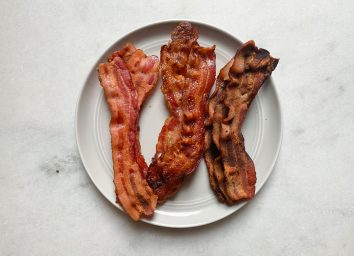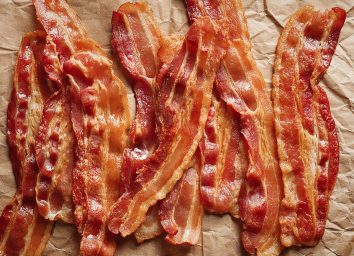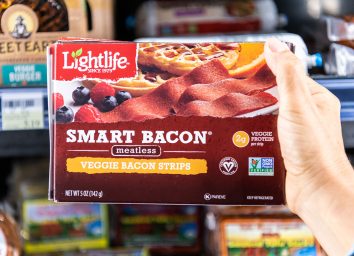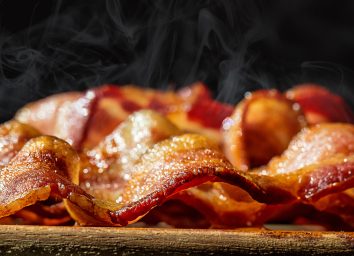This is the Worst Thing You Can Do to Bacon
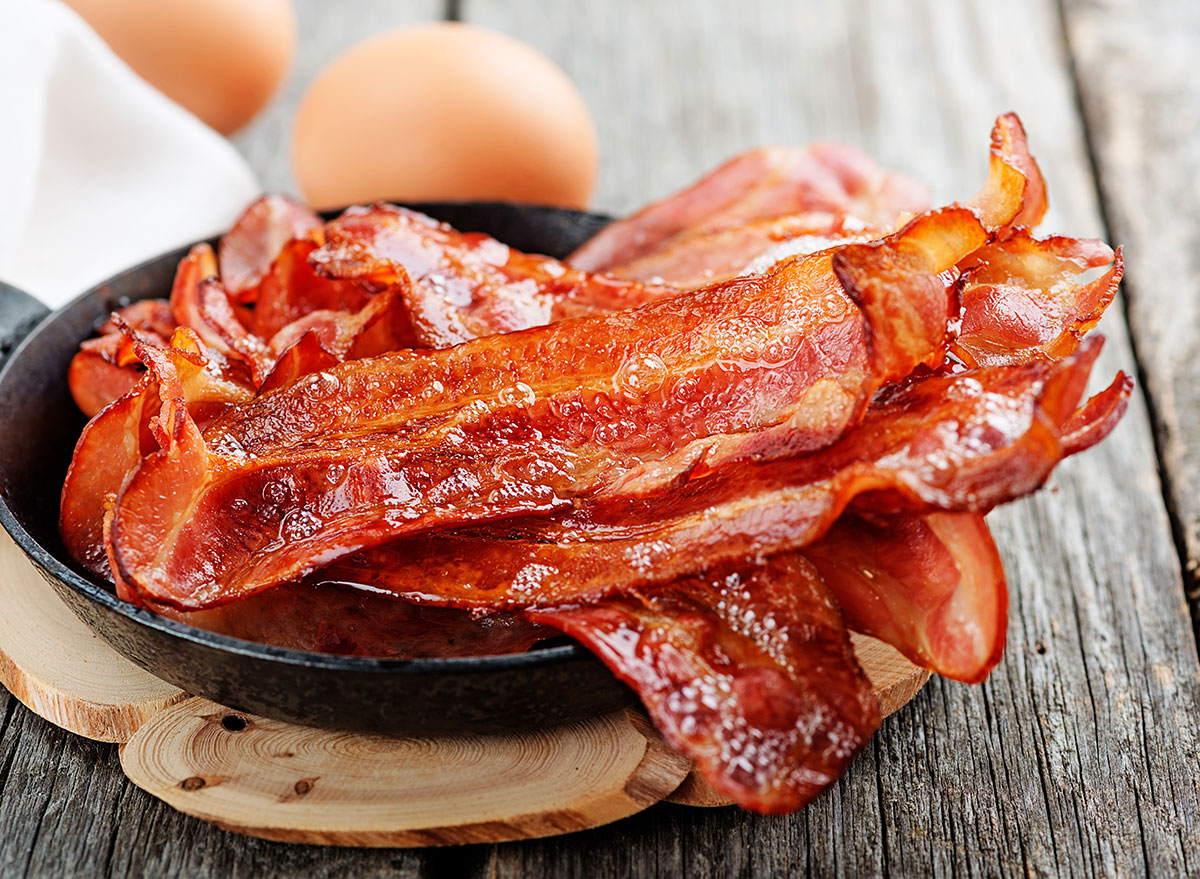
Bacon: It's the perfect pairing for your scrambled eggs; it's the "B" in your BLT sandwich; it's the topping that can help elevate your burger to gourmet status or give your Cobb salad a savory crunch. But how do you make sure you achieve perfectly cooked bacon—with a crisp exterior and a tender, meaty bite every time?
Here, experts dish on the 20 most common bacon mistakes that home chefs make, and lend tips on what to do instead. With these tips, you'll end up with a crunchy, crispy batch every time.
And for more, don't miss these 15 Classic American Desserts That Deserve a Comeback.
Mistake: Buying thin-cut bacon.
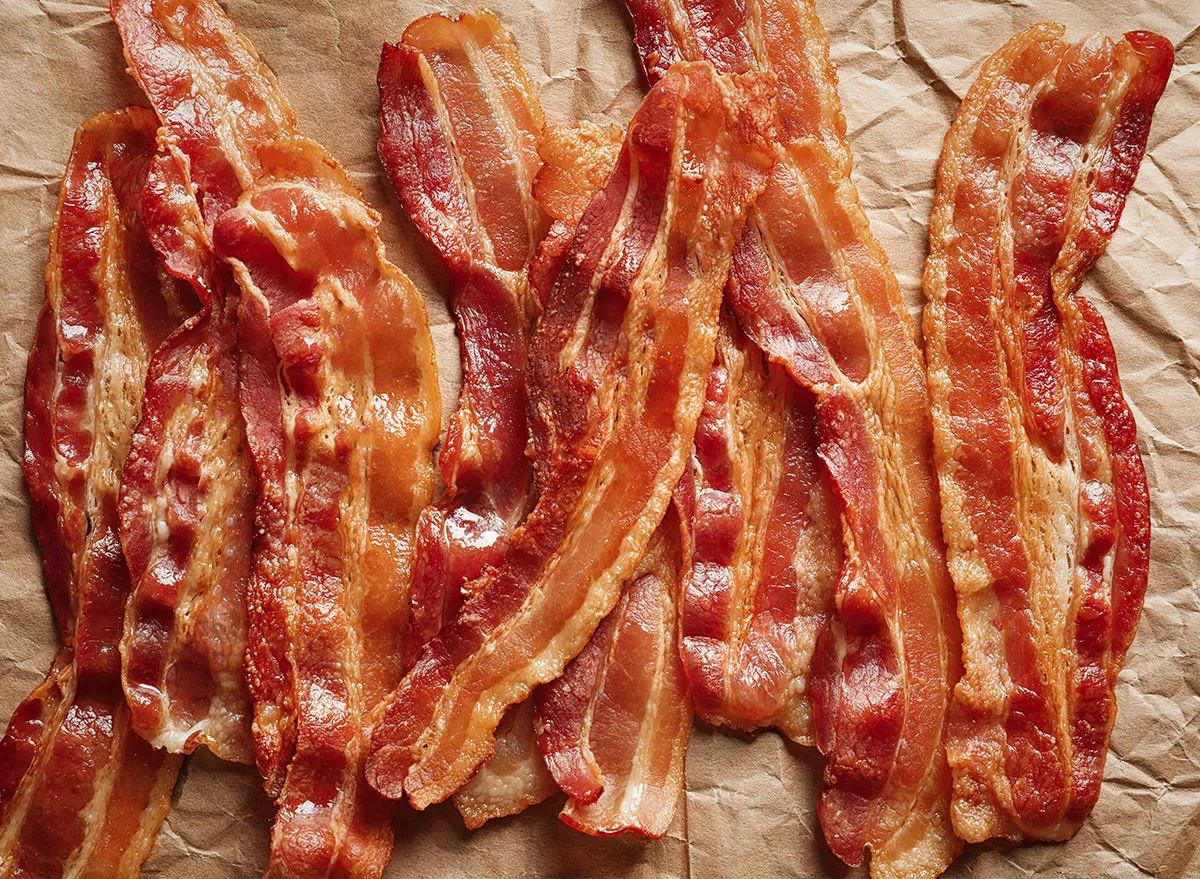
Thin, flimsy bacon may be cheaper, but it simply doesn't cook as nicely as the thicker-cut slabs of bacon, says Chris Royster, the executive chef and partner at Flagstaff House Restaurant in Boulder, Colorado.
How to fix it: Always buy thick-cut bacon, Royster says. "That way, you'll get that crisp outside, and nice, chewy, meaty inside," he says.
Mistake: Not seasoning your bacon.
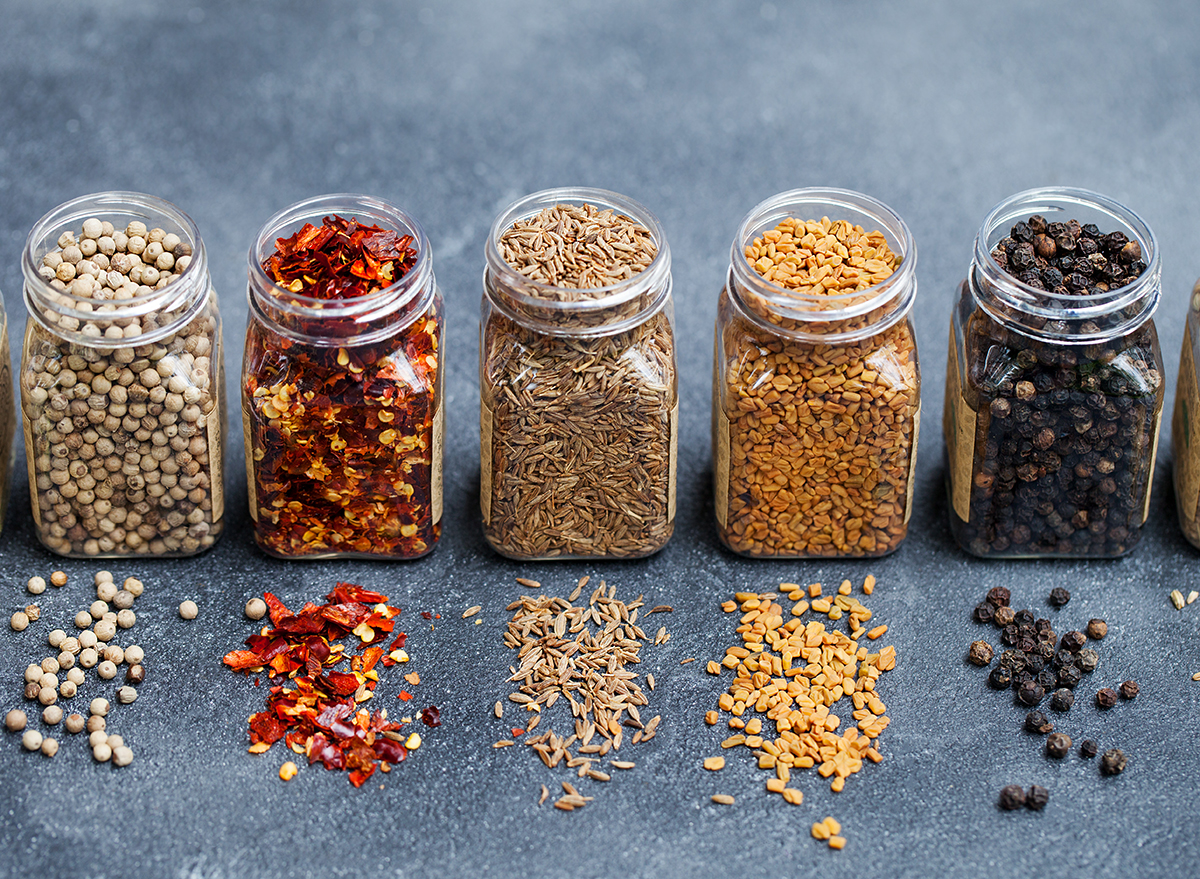
Eating bacon with your eggs for a quick weekday breakfast? Go ahead; pull it straight from the package. But for more special occasions, say a weekend brunch or when you're adding bacon to a homemade burger, give it the gourmet treatment.
How to fix it: "I like to make candied bacon," says Royster, assuring us it's easy to do so. You can use a barbecue spice rub on your bacon or make your own with paprika, cumin, coriander, and brown sugar. The spices take advantage of bacon's natural flavors, he says.
The exception? If you have an expensive cut of bacon, leaving it alone can be best. "There may be a time when leaving it 'au natural' makes sense, especially if you've splurged on really good quality bacon and you want the flavor of the bacon to really shine—similar to when you've bought a great cut of steak—you don't want to over-season because it masks the natural flavor of the beef," says Claudia Sidoti, chef and cookbook co-author of Impatient Cookies and a member of Eat This, Not That!'s Medical Review Board.
Mistake: Putting bacon in a too-hot pan.
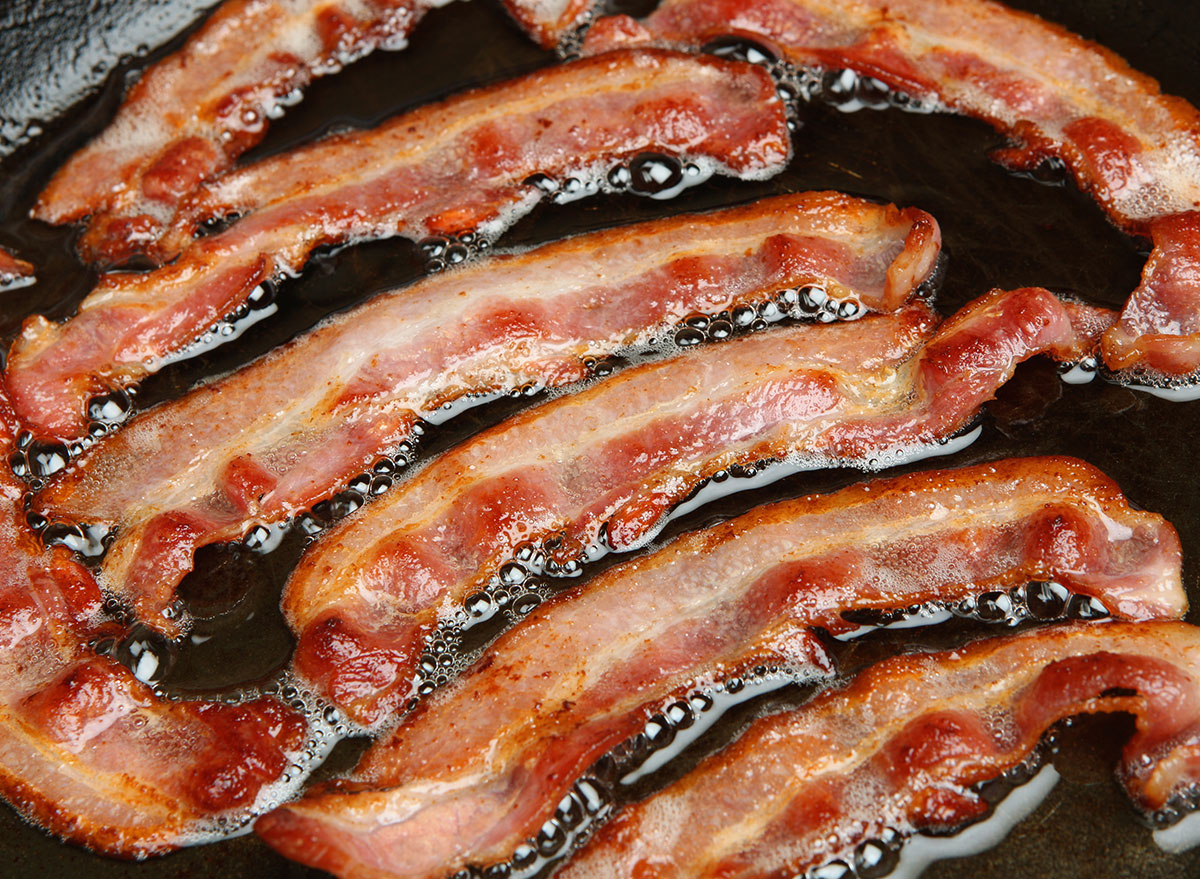
Do this, and you might burn the edges of your bacon, cautions chef Ed Harris, a Chopped winner and the founder of Chef Life Consulting. Dropping your bacon in a hot pan can cause your bacon to be cooked unevenly, undercooked in some sections and overcooked in others.
How to fix it: Patience is a virtue when it comes to cooking bacon. Start cooking your bacon at a low temperature in a cold pan, Harris says.
Mistake: Cooking bacon at too high of heat in the pan.
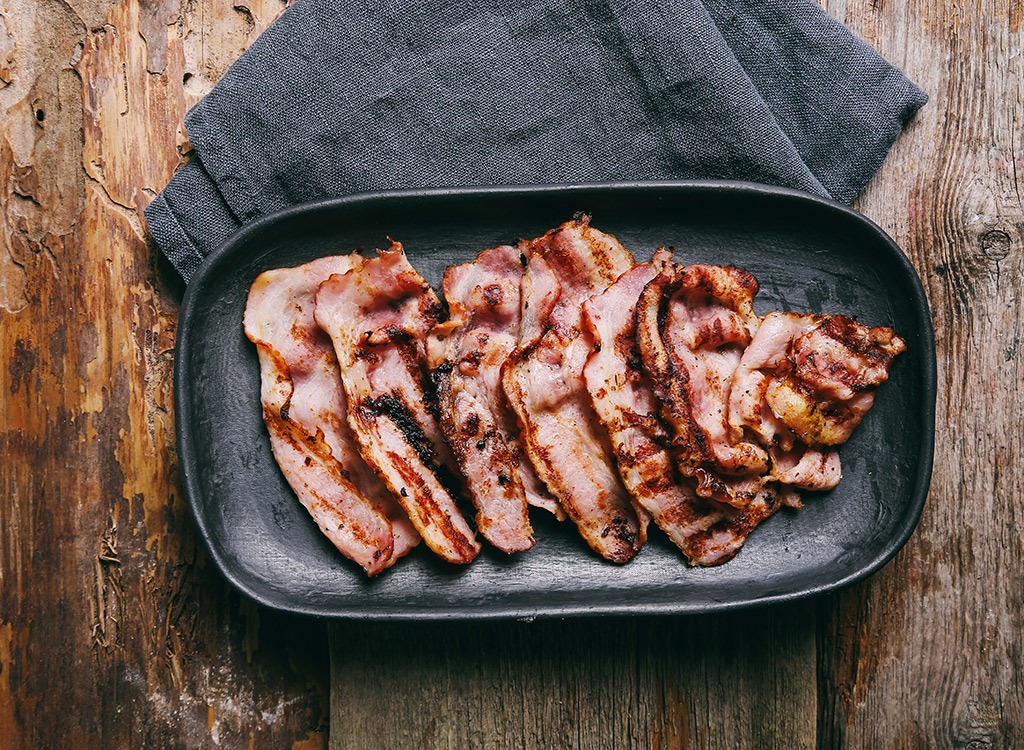
When you're cooking bacon on the stovetop, you don't want to get the heat too high, too fast, chefs say. Too high of heat can result in rubbery bacon.
How to fix it: Turn your stove to medium-low and start slowly rendering the bacon, says Restaurateur & Executive Chef Hannah Hopkins with Bésame Steamboat in Steamboat Springs, Colorado. "As it renders, turn the heat up so you get a nice golden brown," Hopkins says.
Mistake: Not using the correct pan.
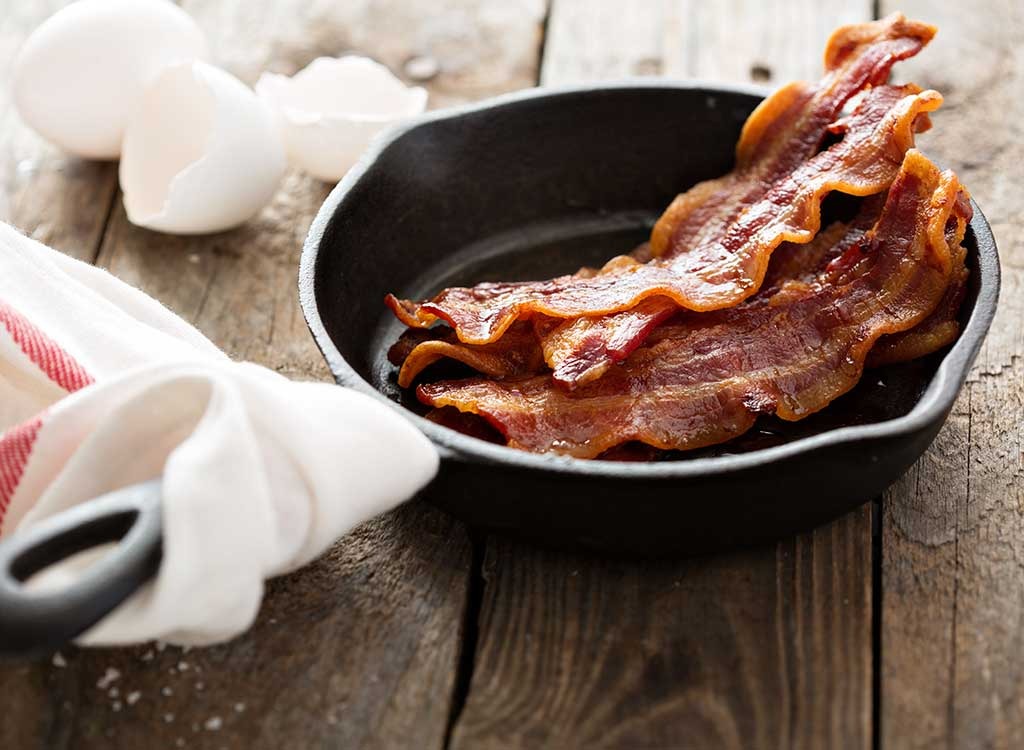
If you're wondering why your bacon isn't cooked evenly, you might want to wag your finger at the pan you're using, explains Theo Weening, the vice president of meat and poultry at Whole Foods Market.
How to fix it: A cast iron pan is the best for cooking bacon, Weening says. "An added bonus is that it will also season the cast iron pan with bacon grease," he says.
Mistake: Putting too much bacon in the pan.
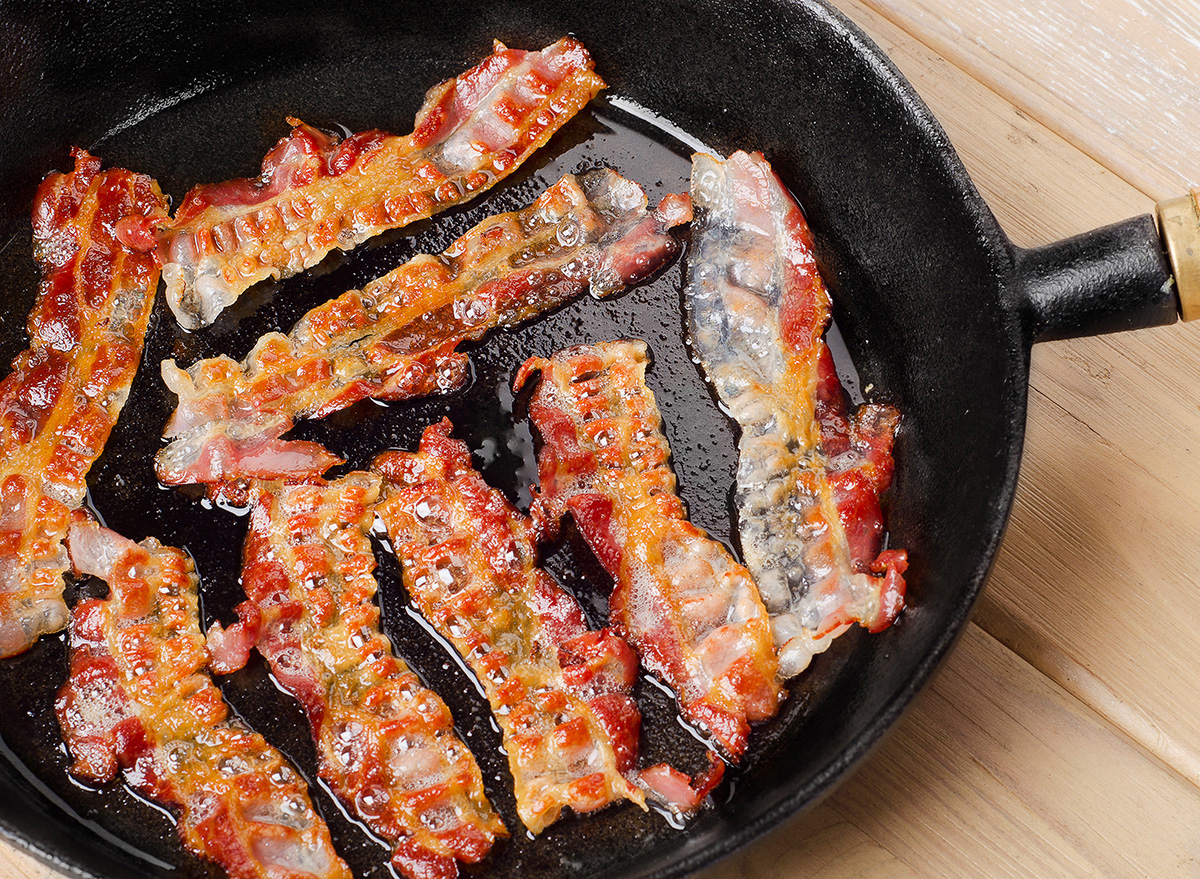
Whether you're cooking for a crowd or you've got a big appetite, it may be tempting to throw as many strips of bacon into the pan as you can. But, this, too, will lead to bacon that's cooked unevenly, Weening cautions.
How to fix it: Keep at least one inch between each slice of bacon when you're cooking it, he suggests.
Mistake: Creating a lot of smoke from cooking bacon in the oven.
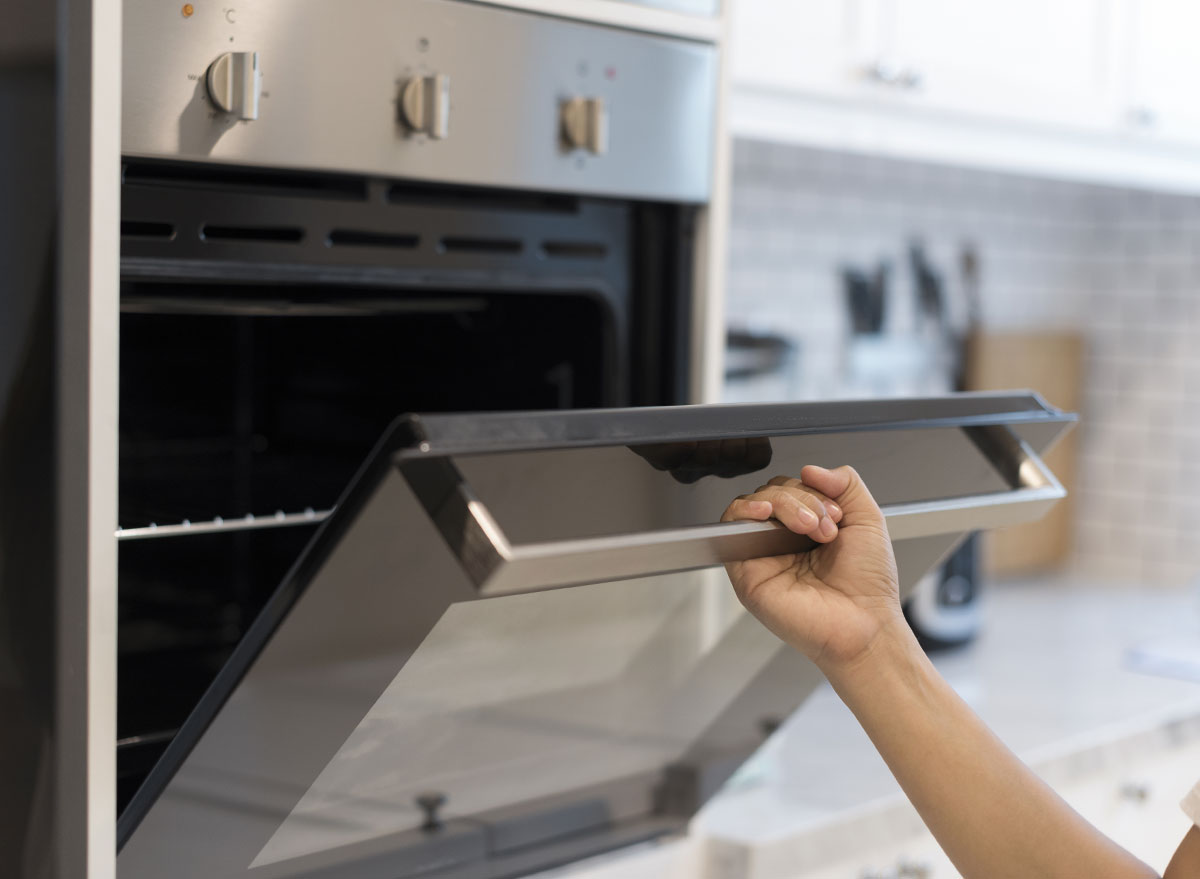
If you're cooking bacon in the oven, you don't want to (a). Drive your dog crazy with the aroma of bacon all day long or (b). Set off your smoke alarm.
How to fix it: Line your pan with paper towels, suggests Weening. It will soak up the grease and stop the smoke show. For the record, chef Alton Brown also recommends using paper towels when baking bacon.
Mistake: Keeping uncured bacon in the fridge too long.
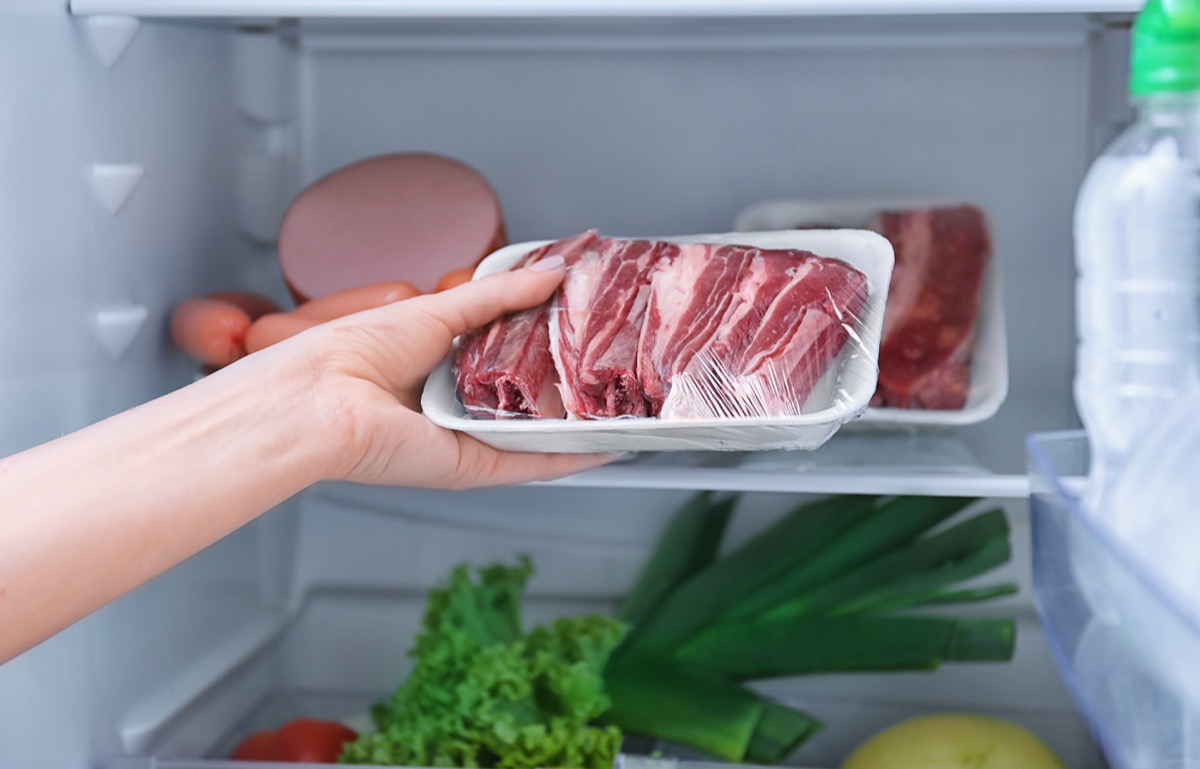
Uncured bacon has no added nitrates, Weening says, which means that it goes bad quicker than regular bacon with nitrates.
How to fix it: Always check expiration dates. Also, according to the USDA's Food Safety and Inspection Service, leftover cooked bacon shouldn't be stored in the refrigerator for more than four to five days. It can be stored in the freezer for up to one month.
Mistake: Frying it in a pan.
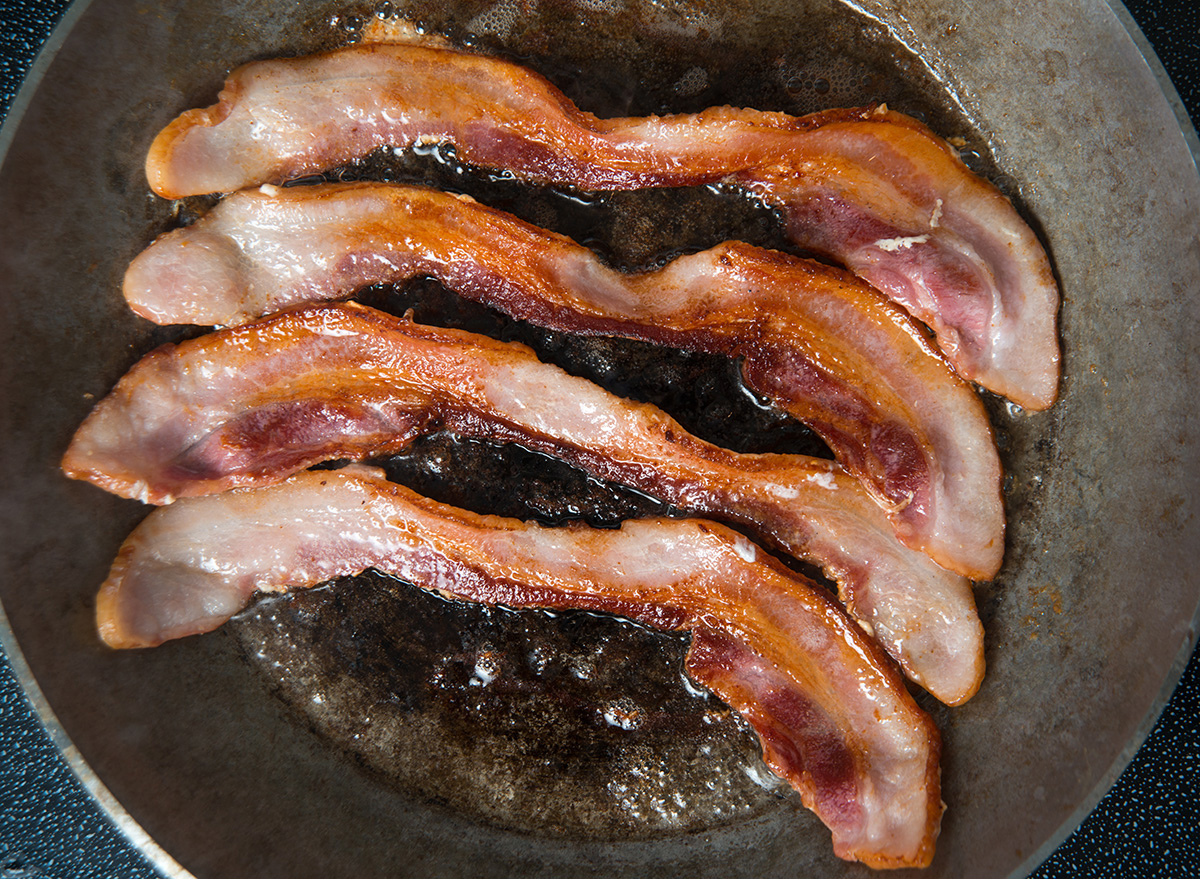
Yes, this may be a popular method. But hear us out: It splatters like crazy, you can't fit very many slices in there at a time, and the bacon gets all curled up if you cook it for too long, says Paula Hingley, founder of How to Make Dinner.
How to fix it: Bake your bacon! Try laying out your bacon strips on a parchment-lined baking sheet, Hingley suggests. Just remember to set the timer.
Mistake: Cooking your bacon too high in the oven.
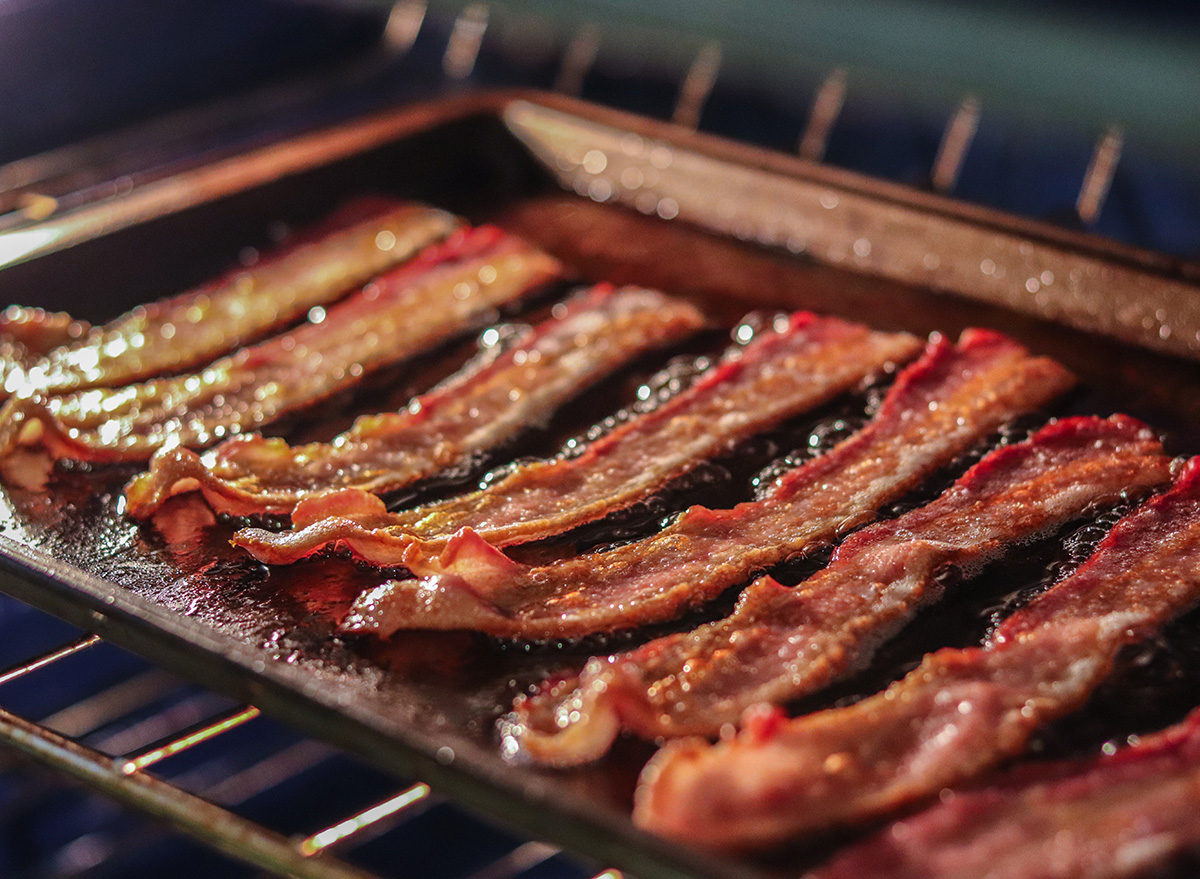
You want your bacon to have a good snap to it, but you don't want to burn it.
How to fix it: If you go the oven route, take a low-and-slow approach, suggests Gavin Fine, chef and restaurateur of Fine Dining Restaurant Group in Jackson Hole, Wyoming. He recommends cooking your bacon at 325 degrees Fahrenheit for 20 minutes.
Mistake: Not listening.
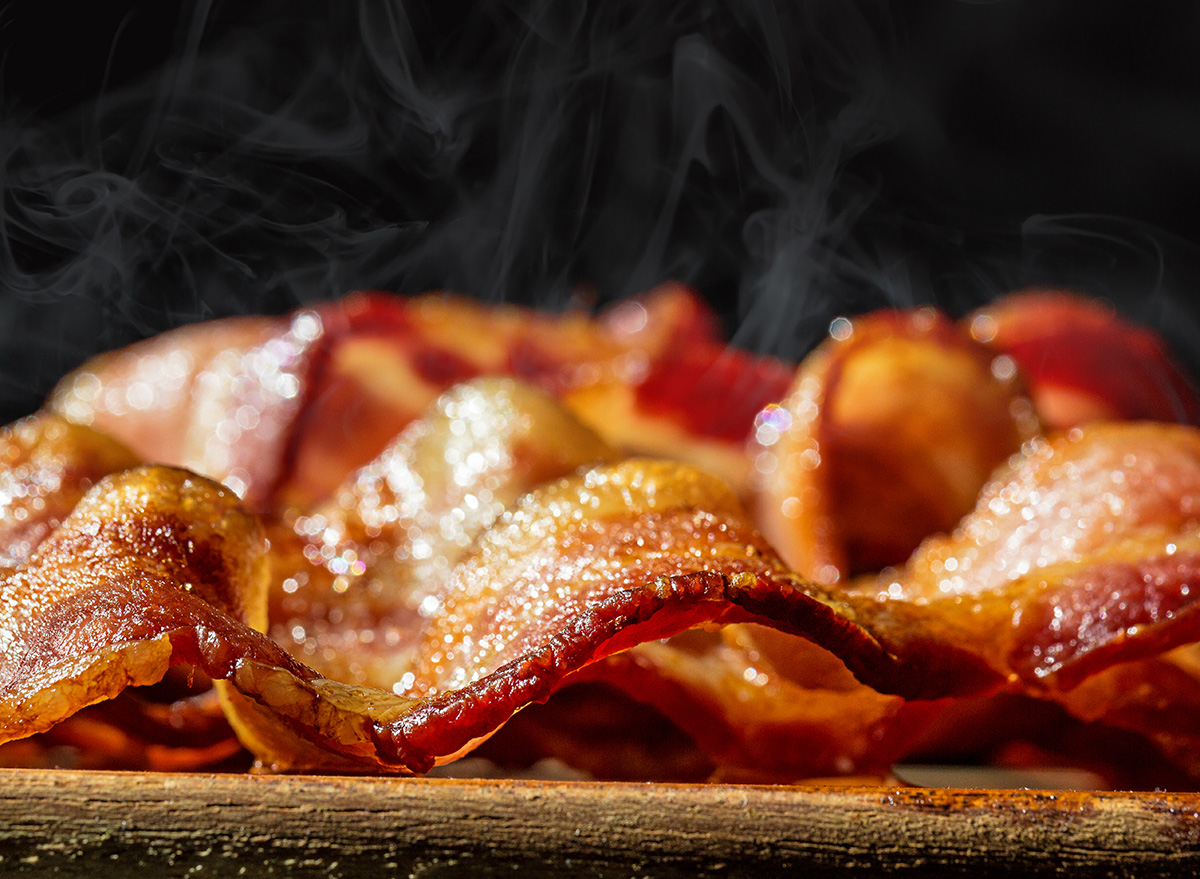
You know how you listen for kernels to stop popping when you're making popcorn. Are you employing the same strategy when cooking bacon? If not, you could be overcooking your bacon, says recipe developer Hailey McKenna of Cooking and Cussing. "Bacon can burn easily in the final minutes," she says. There's a fine line between perfectly rendered fat and burnt edges.
How to fix it: Turn down the heat to low once the bacon is browned, McKenna suggests, and listen to the sizzle. If it's not sizzling, it's getting closer to burning and it's time to pull the pan from the heat.
Mistake: Not paying attention to the type of smoke used.
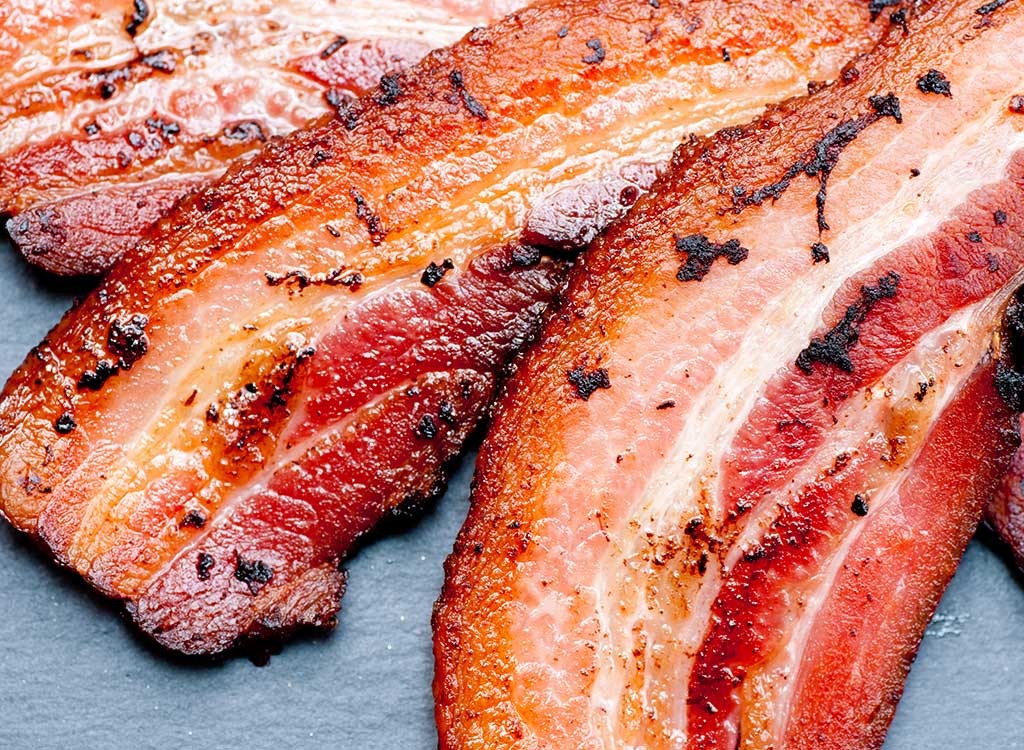
Hickory, applewood, and mesquite are all common, but all provide a different flavor profile, McKenna says.
How to fix it: Know how the flavors differ. Hickory is mild, with a subtle smokiness to it, she says. Applewood has a nice sweet finish. Mesquite is the smokiest and boldest flavor, she says.
Mistake: Cooking bacon directly from the fridge.
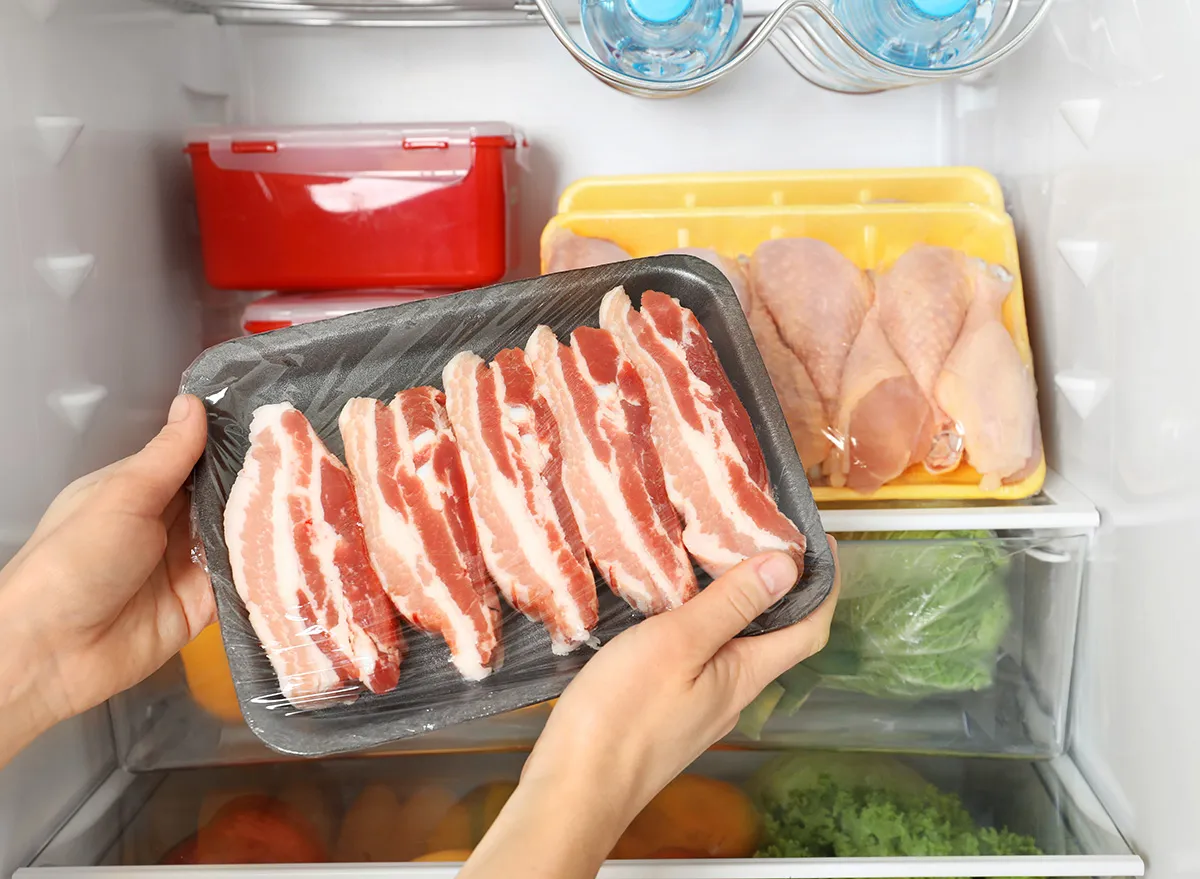
The fat in your bacon will retain the cold longer, so you don't want to start cooking it right when you pull it from the fridge, says Executive Chef Michael Tiva, with Wolfgang Puck Bar and Grill at Disney Springs in Orlando, Florida.
How to fix it: Take your bacon out of the refrigerator 15 to 30 minutes before you start cooking it, Tiva suggests. "It's best to let your bacon come to room temperature before cooking it to ensure it cooks through evenly," he says. Plus, this trick will give you more flavorful bacon.
Mistake: Tossing the bacon grease.
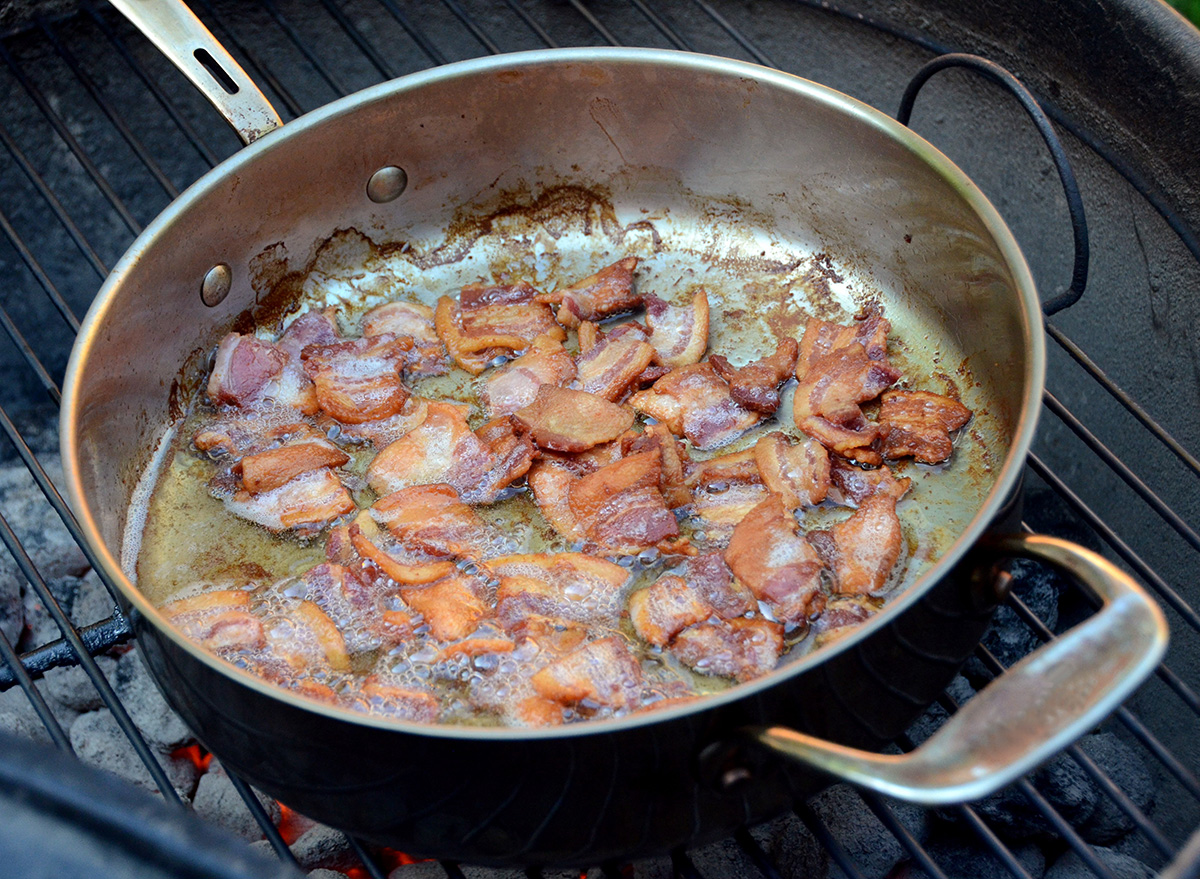
Wait! Don't throw away those delicious bacon drippings just yet, says Thomas Odermatt, a master butcher and maker of Butcher's by Roli Roti Bone Broth.
How to fix it: Whenever you cook bacon, jar the fat. "When you get about half a cup full, use it to cook and fry things in," Odermatt says. "My favorites are to fry chicken skin in it and also kale stems. After I make a kale salad, I'll chop up the kale and throw them in the hot bacon fat to fry for a crispy kale chip treat."
Mistake: Draining the fat too late.
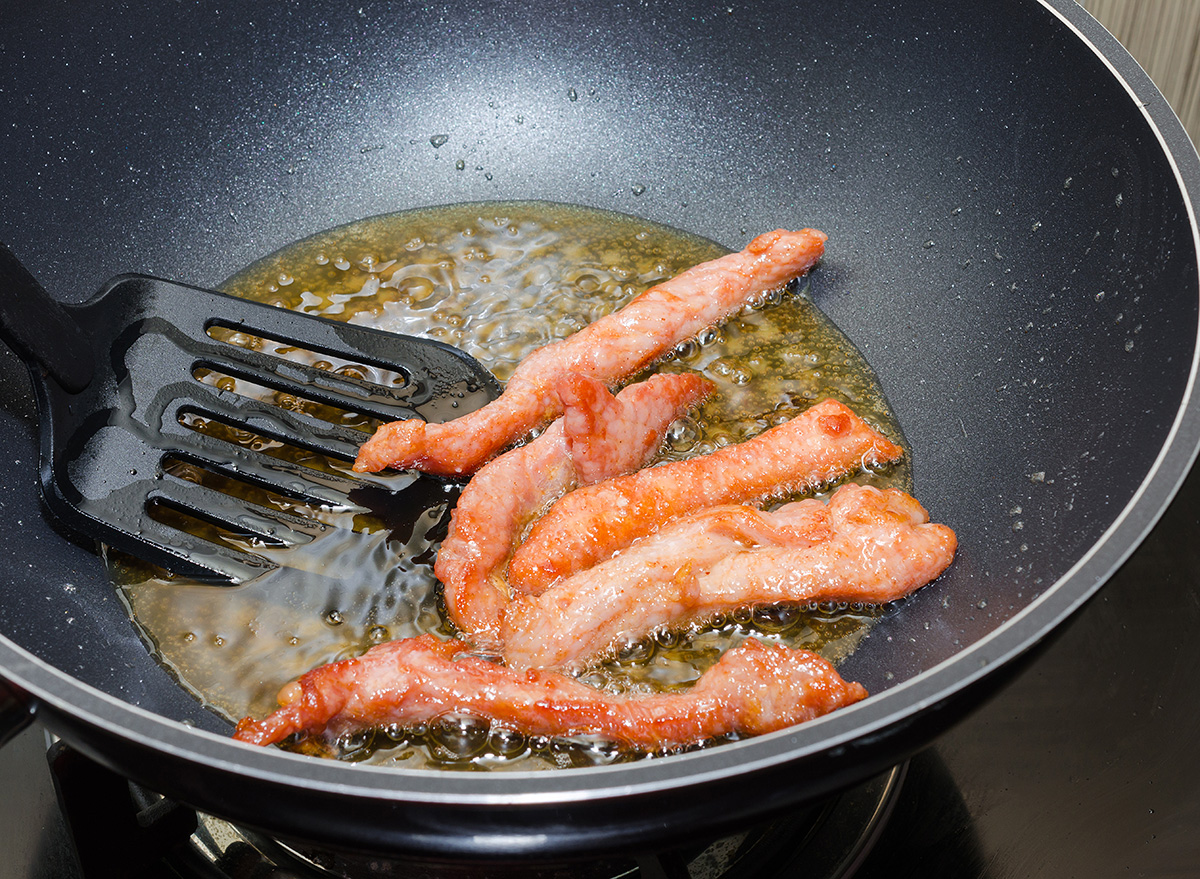
Are you waiting until the end to drain your bacon fat? If so, the fat in the pan will burn your bacon and prevent it from getting that delicious crisp, explains Tom Beckman, Escoffier chef educator.
How to fix it: For maximum crispness, drain the fat part of the way through cooking, Beckman suggests.
Mistake: Only buying pre-packaged bacon.
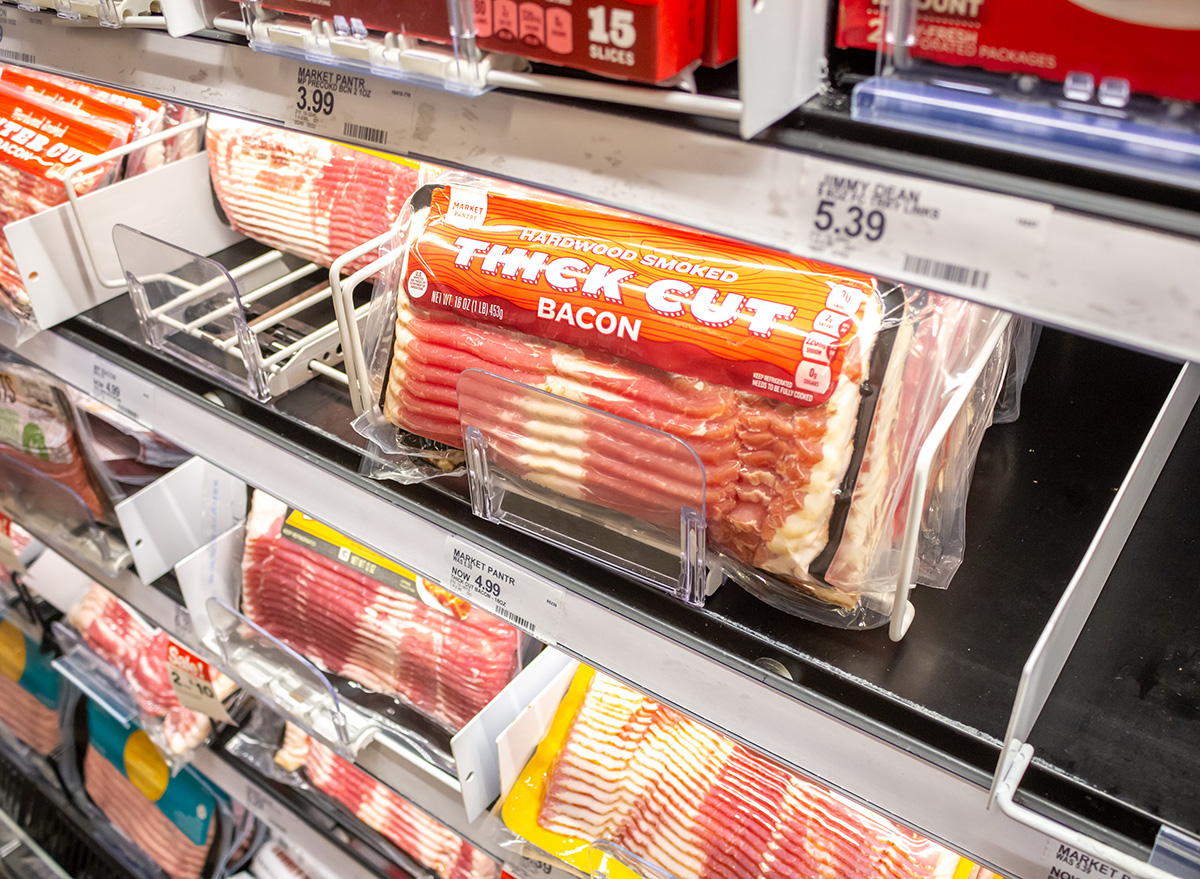
You might be used to heading to the bacon section, but there's a whole other arena waiting to be explored.
How to fix it: "Don't be scared of the meat counter," says Executive Chef Hugo Bolanos with Wolfgang Puck at Hotel Bel-Air in Los Angeles. You'll find whole slabs and can have it sliced exactly how you want it. "I recommend 1/8-inch slices or about 14 to 16 slices per pound," Bolanos says.
Mistake: Only thinking of bacon at breakfast.
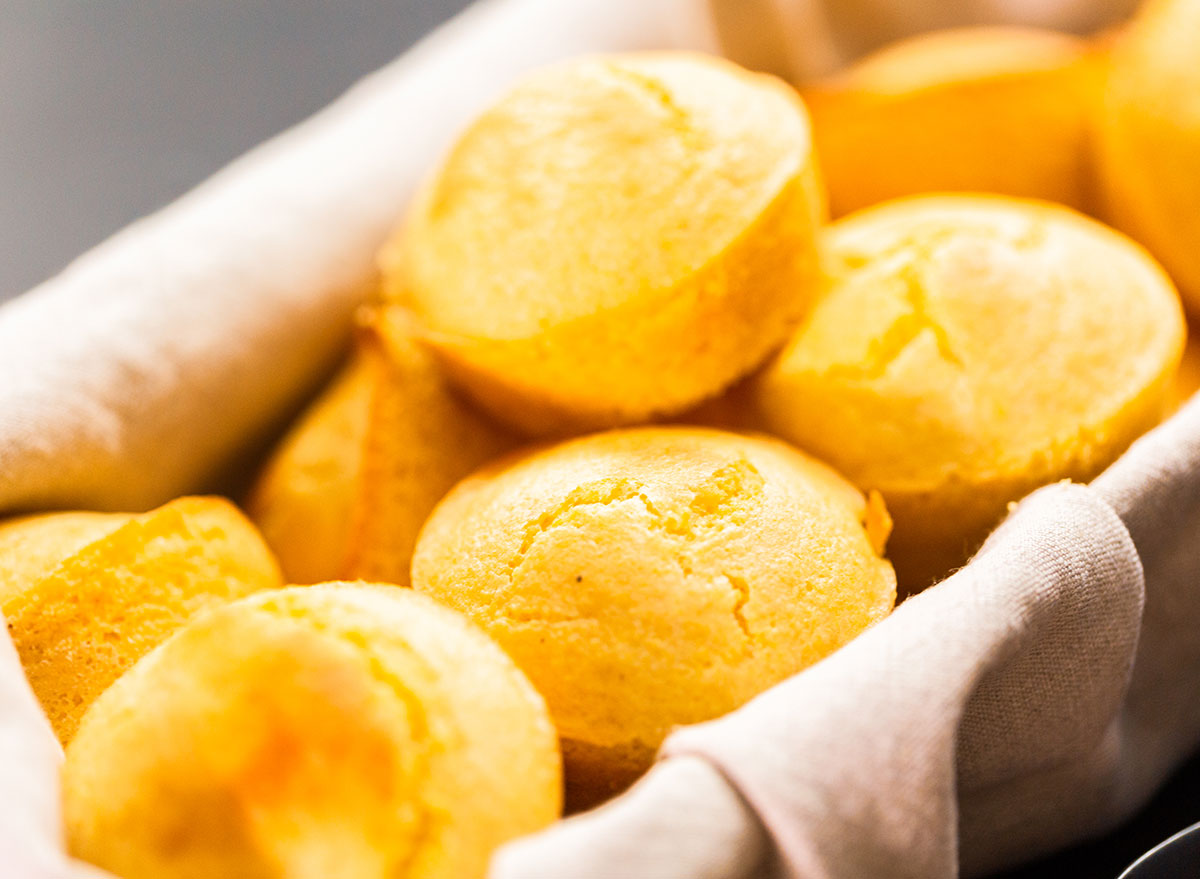
Yes, bacon and eggs are a dream team. But bacon is versatile!
How to fix it: Chefs also love bacon for bread and desserts. Try adding it into your cornbread, suggests Beckman. Or use the bacon grease in place of butter in some homemade biscuits, suggests Royster. Another idea? Use bacon grease for a savory addition to the frosting on cinnamon rolls, suggests Executive Chef Adam Vero of Guard and Grace in Denver, Colorado.
Mistake: Not using a splatter screen.
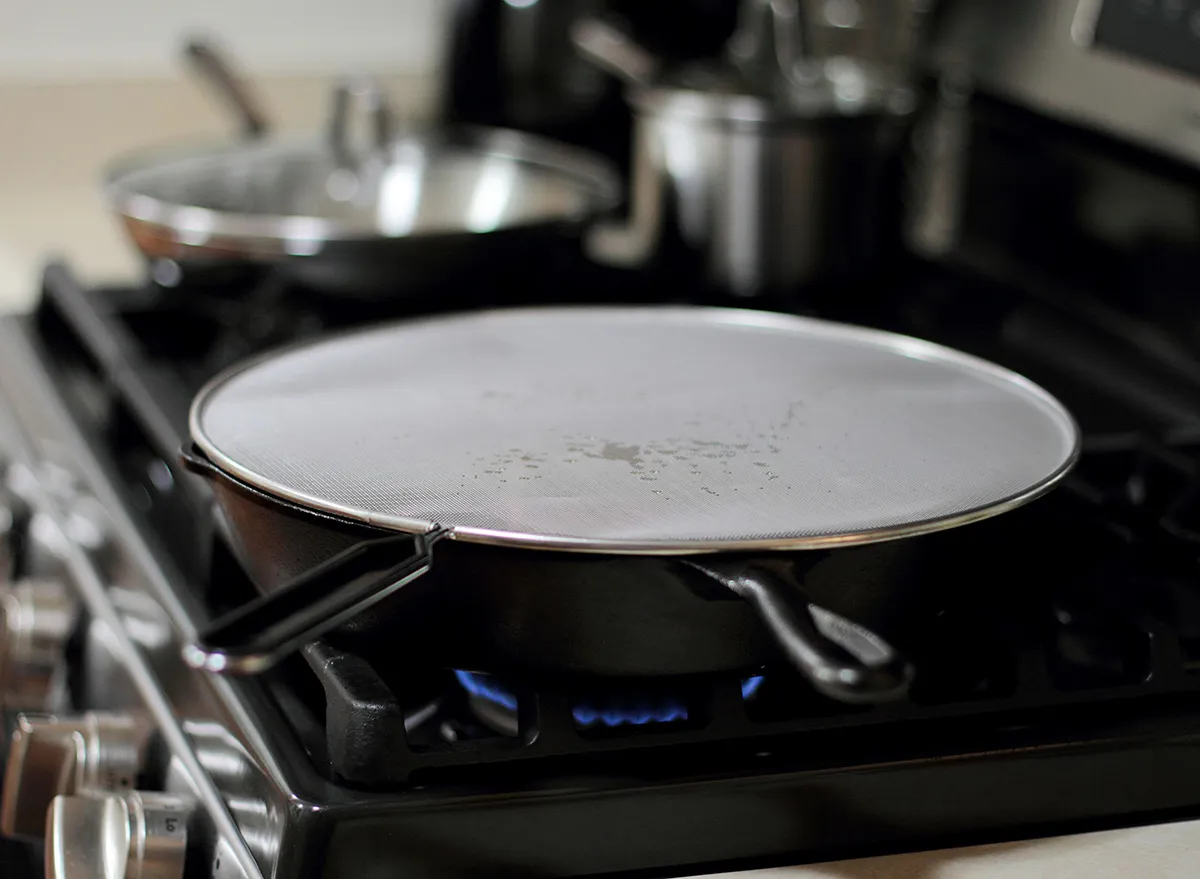
Prefer to make your bacon in a pan? Don't get burned by the snap, crackle, and pop of the grease.
How to fix it: "To reduce splattering, a screen can be put over the pan while cooking bacon in a saute pan," says Beckman. You can buy splatter screens for under $10.
Mistake: Not using oil.
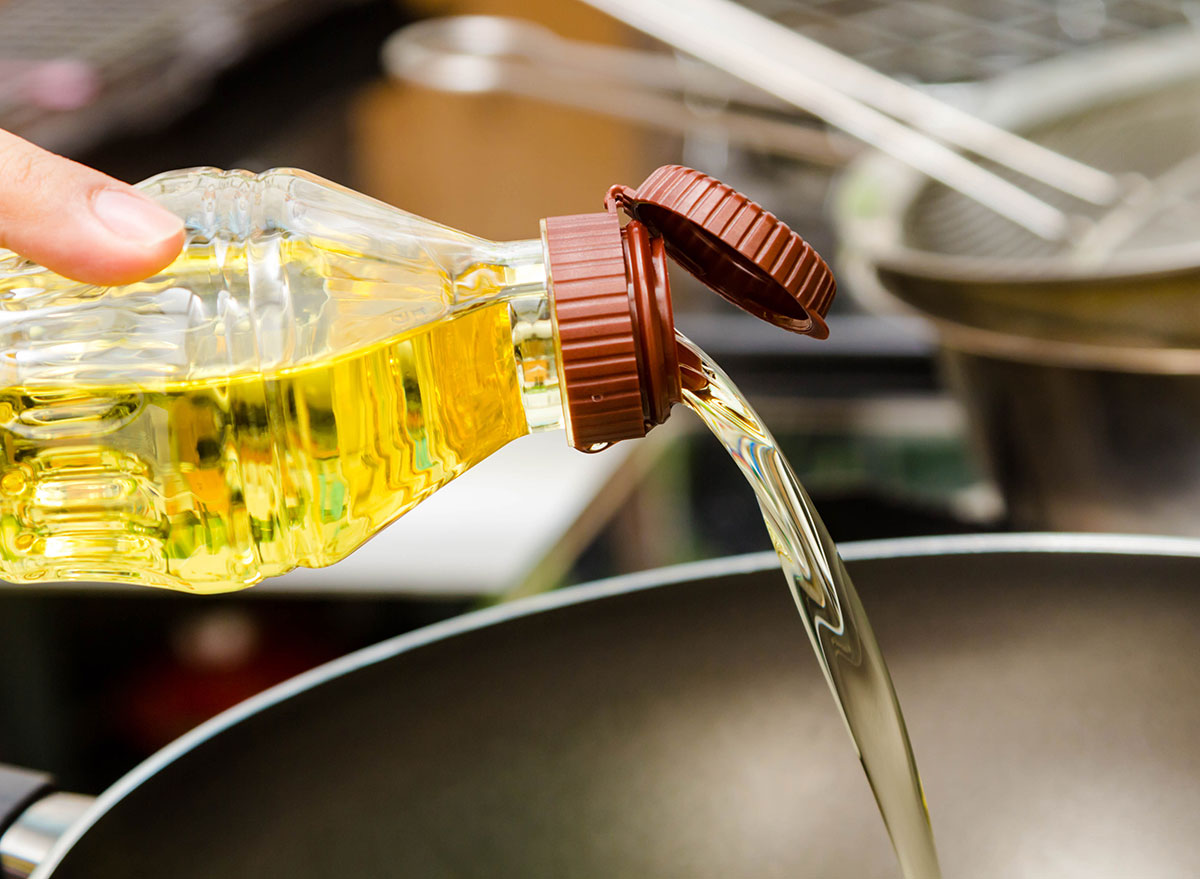
It would be easy to assume that you could let the bacon grease do all the work when you put it in a frying pan.
How to fix it: Bacon does need a little extra oil or butter to make sure it doesn't stick to the bottom of the pan, says Executive Chef Alberto Morreale of San Diego's Farmer's Table.
Mistake: Pouring bacon grease down the drain.

You're in a hurry to clean up after making breakfast. But don't toss that bacon grease down the drain. It might be hot liquid when you dump it in the garbage disposal, but it can congeal as it cools and accumulate on the walls of the drain, causing problems. It could even contribute to a fatberg in your local sewage system.
How to fix it: Pour the grease into an old can or jar and discard it.
Say so-long to burnt-to-a-crisp bacon or flimsy strips. Whether you like to fry your bacon or toss it in the oven, these tips will help you make consistently delicious bacon every time.
For more, check out these 108 most popular sodas ranked by how toxic they are.
